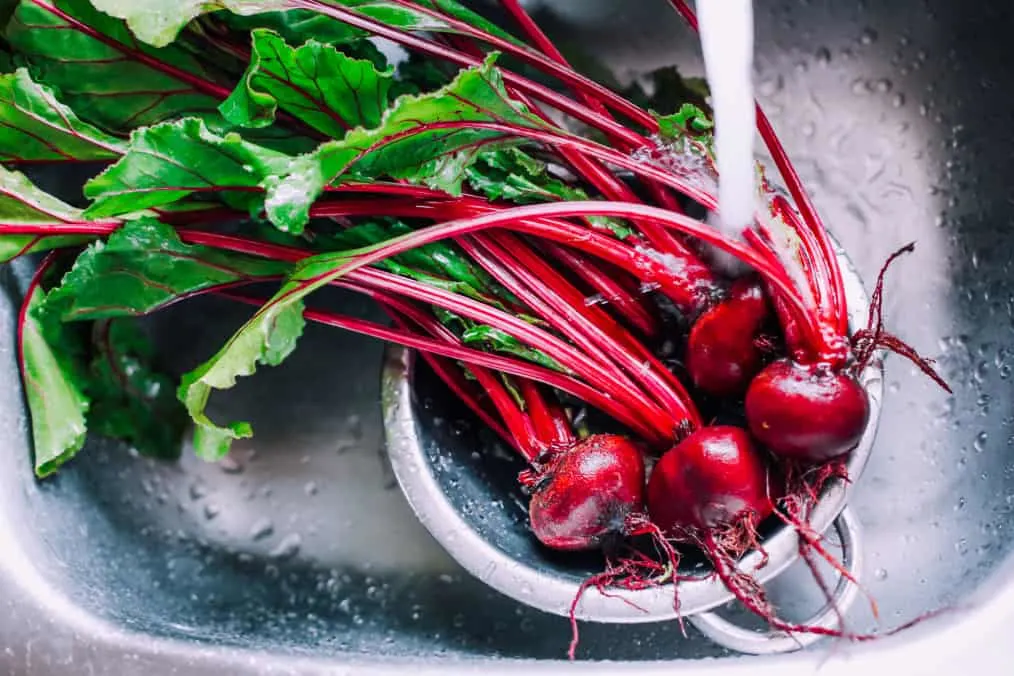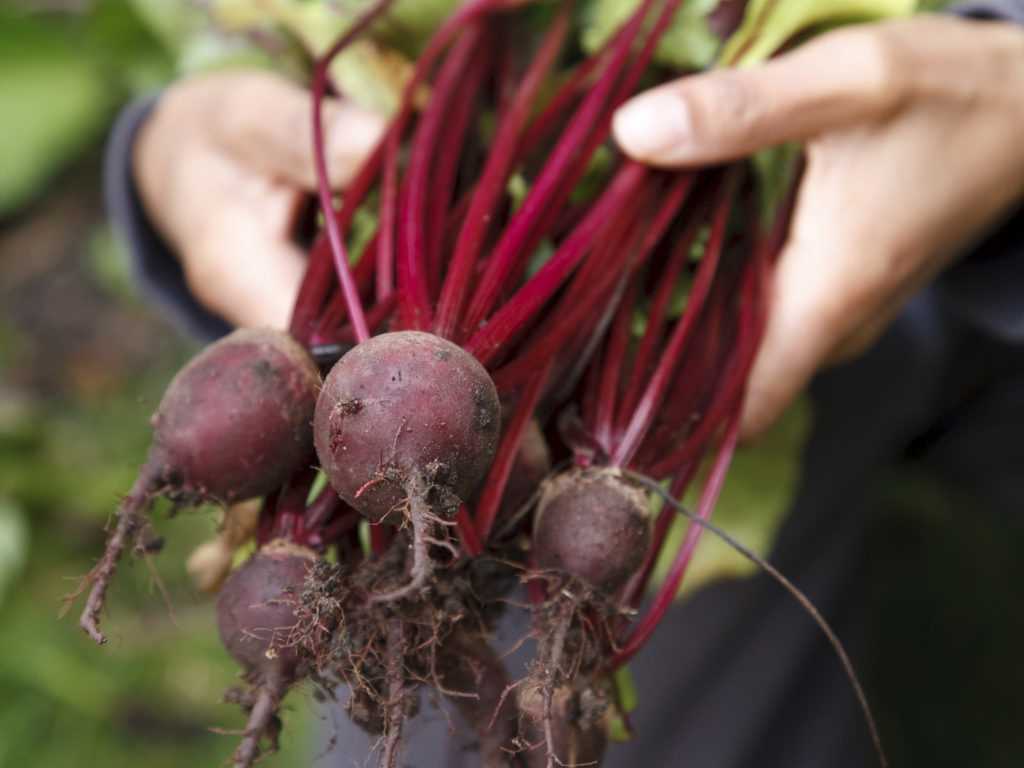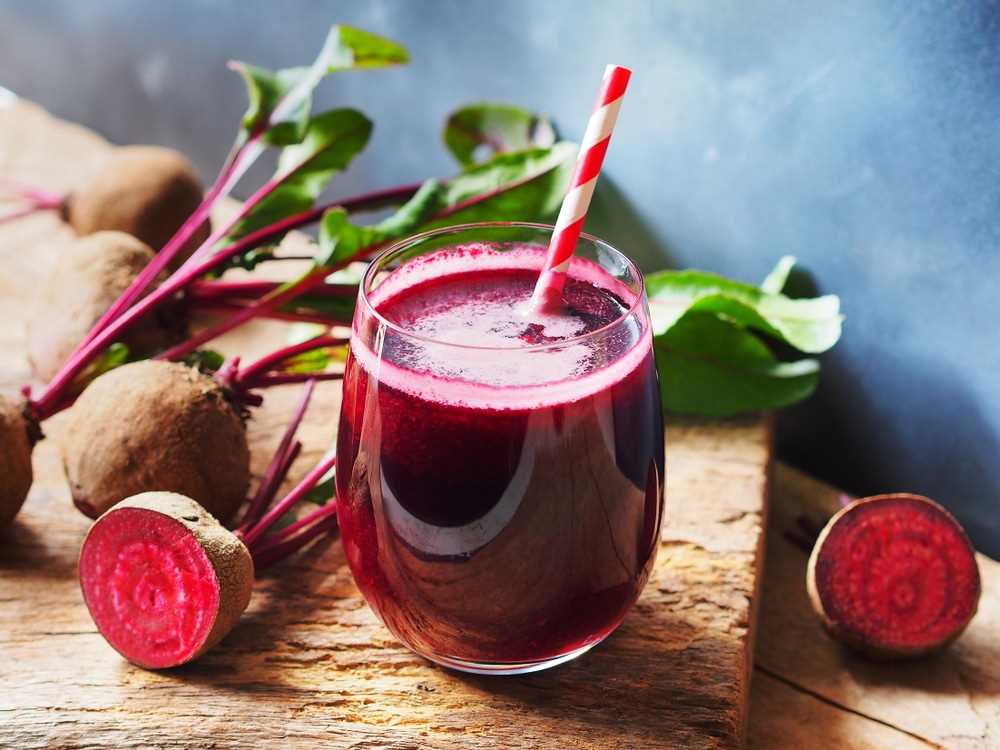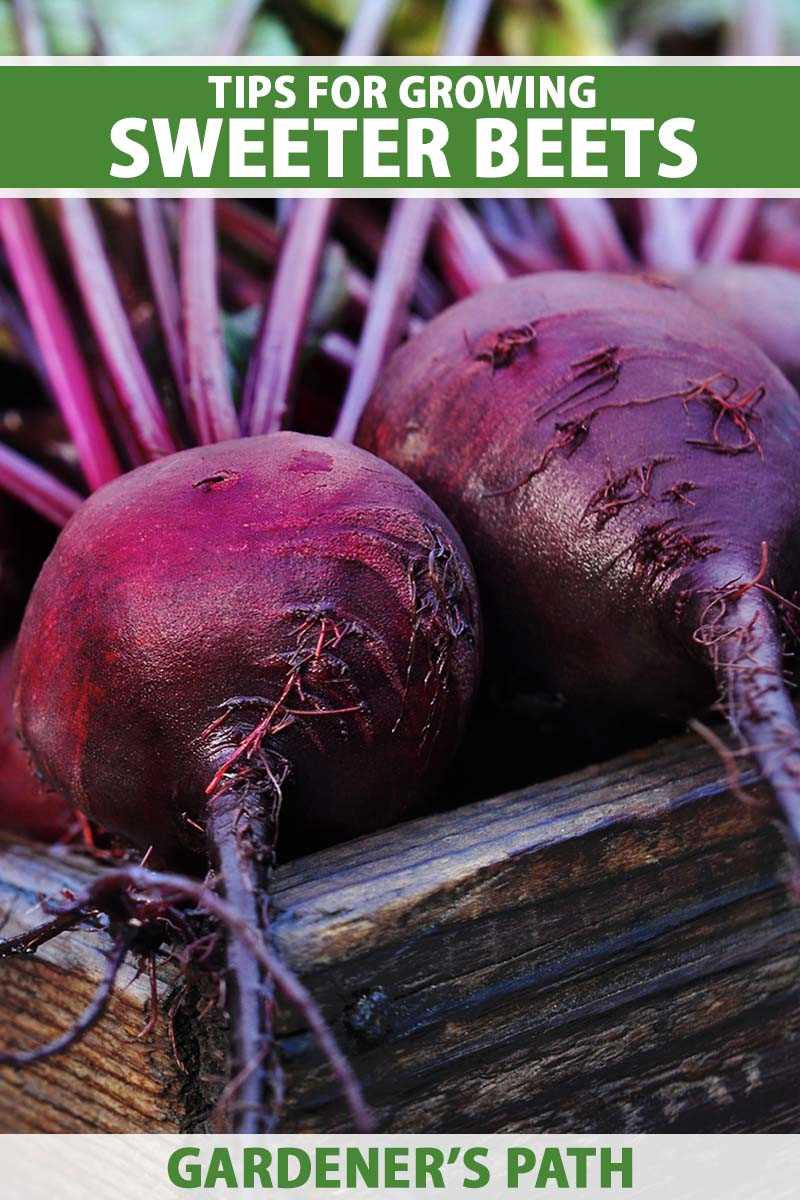- Understanding Beetroot
- Health Benefits of Beetroot
- Growing Beetroot
- Harvesting and Storing Beetroot
- Importance of Sweetness
- Watering Techniques
- 1. Consistent Moisture
- 2. Avoid Overwatering
- 3. Frequent but Light Watering
- 4. Mulching
- 5. Watering Times
- 6. Monitoring Soil Moisture
- 7. Drip Irrigation
- Choosing the Right Fertilizer
- Soil Analysis
- Nutrient Requirements
- Fertilizer Types
- Slow-Release Fertilizers
- Consult a Gardening Expert
- Applying Fertilizer Correctly
- 1. Test your soil
- 2. Choose the right fertilizer
- 3. Follow the recommended rates
- 4. Apply fertilizer evenly
- 5. Water after application
- 6. Apply fertilizer at the right time
- 7. Monitor for signs of over- or under-fertilization
- 8. Consider organic alternatives
- Monitoring Soil Moisture
- Harvesting at the Right Time
- 1. Monitor the Size
- 2. Check the Tops
- 3. Test the Texture
- 4. Consider the Days to Maturity
- 5. Don’t Wait Too Long
- Tips for Storing Beetroot
- 1. Harvest and Preparation
- 2. Wash and Dry
- 3. Separate Leaves
- 4. Cool and Dry Location
- 5. Storage Containers
- 6. Check for Spoilage
- “Question-Answer”
- Why are my beetroots not sweet?
- What is the best way to water beetroot plants?
- Can I make my beetroots sweeter by using fertilizers?
- How often should I fertilize my beetroot plants?
- Are there any natural methods to make beetroot sweeter?
- “Video” Mastering Beetroot: Tips for Successful Early Sowings and Year-Round Harvest
Beetroot is a versatile and nutritious vegetable that can be enjoyed in a variety of dishes. Whether you’re using it in salads, soups, or juices, the taste of beetroot can range from sweet to earthy. If you’re looking to enhance the sweetness of your beetroots, there are several tips and tricks you can follow when it comes to watering and fertilization.
One of the key factors in making beetroot sweeter is providing the optimal amount of water. Beetroot plants need a consistent and adequate water supply to develop their sugars and flavors. However, overwatering can lead to diluted flavors and reduced sweetness. It’s important to strike a balance and water your beetroot plants when the soil is dry to the touch, but not so much that the soil becomes waterlogged.
In addition to proper watering, fertilization plays a crucial role in enhancing the sweetness of beetroot. One important tip is to avoid over-fertilizing your plants. While it may be tempting to provide excessive nutrients, this can actually hinder the development of sugars in the roots. Instead, opt for a balanced fertilizer that provides essential nutrients without overloading the plants.
Another technique to make beetroot sweeter is to use organic fertilizers. Organic fertilizers, such as compost or well-rotted manure, help improve the soil structure and provide a slow-release of nutrients. This promotes healthy root growth and enhances the overall flavor of the beetroot. Additionally, organic fertilizers are less likely to cause nutrient imbalances that can negatively affect the taste of the vegetable.
By following these essential tips for wiser watering and optimal fertilization, you can make your beetroot sweeter and more delicious. Remember to provide the right amount of water, avoid over-fertilizing, and consider using organic fertilizers to enhance the natural sweetness and flavor of your beetroot. With these techniques, you’ll be able to enjoy beetroot that is rich in taste and nutrients.
Understanding Beetroot
Beetroot, also known as garden beet, table beet, or red beet, is a root vegetable that belongs to the Chenopodiaceae family. It is a nutritious and versatile vegetable that can be cooked, pickled, or juiced. Beetroot has a distinctive deep red, purple, or yellow color and a sweet, earthy flavor.
Historically, beetroot was cultivated for its leaves rather than its root. However, over time, farmers discovered that the root of the beet plant is not only edible but also highly nutritious. Today, beetroot is widely popular and cultivated for its roots, which are rich in vitamins and minerals.
Health Benefits of Beetroot
- Beetroot is a rich source of dietary fiber, which aids digestion and promotes a healthy gut.
- It contains antioxidants called betalains, which have anti-inflammatory and antioxidant properties.
- Beetroot is high in essential minerals such as potassium, manganese, and folate.
- It is known to improve blood circulation and lower blood pressure.
- Beetroot is beneficial for liver health and detoxification.
Growing Beetroot
Beetroot can be grown in a variety of climates and soil types. It prefers loose, well-drained soil with a pH level of 6.0 to 7.5. The best time to plant beetroot seeds is during early spring or late summer.
When planting beetroot, sow the seeds directly into the soil at a depth of 1/2 inch. Space the seeds 1 inch apart and cover them with a fine layer of soil. Water the seeds regularly to keep the soil moist but not waterlogged.
Beetroot requires consistent watering throughout its growing period to ensure proper root development and prevent cracking. Adequate fertilization is also crucial to support healthy growth and enhance sweetness. A balanced fertilizer high in phosphorus and potassium is recommended for optimal beetroot production.
Harvesting and Storing Beetroot
Beetroot can be harvested when the roots are about 1.5 to 2 inches in diameter. Gently loosen the soil around the base of the plant and lift the roots out of the ground. Trim off the leaves, leaving about an inch of stem attached to the root.
To store beetroot, remove any excess soil and trim off the leaves. Store the roots in a cool, dry place such as a cellar or refrigerator. Beetroot can be stored for several weeks to a few months, depending on the variety and storage conditions.
| Variety | Color | Features |
|---|---|---|
| Bull’s Blood | Deep Red | Intense flavor, red stems, and leaves |
| Golden | Golden Yellow | Mild flavor, orange-yellow flesh |
| Chioggia | Candy-Striped | Distinctive pink and white rings when sliced |
With proper understanding of beetroot and its cultivation requirements, you can enjoy the sweet flavor and health benefits of this versatile vegetable in your own garden.
Importance of Sweetness
Sweetness is an important characteristic of beetroot that greatly influences its taste and culinary uses. A sweet beetroot not only enhances the flavor profile of dishes but also provides a pleasant eating experience.
Enhanced flavor: Sweetness adds complexity and depth to the flavor of beetroot. It balances the earthy and slightly bitter notes, making it more enjoyable to eat. A sweet beetroot can add a burst of sweetness to salads, soups, roasted vegetables, or even juiced for a refreshing and nutritious beverage.
Palatability: The sweetness of beetroot makes it more palatable, especially for individuals who may have an aversion to vegetables. By increasing the sweetness, beetroot can become more appealing to both adults and children, encouraging them to consume more vegetables and reap the nutritional benefits it provides.
Cooking versatility: Sweeter beetroot varieties can be used in a wide range of culinary applications. The natural sweetness pairs well with both savory and sweet dishes, allowing for versatility in cooking and baking. From beet salads and pickles to beet chips and even beet-based desserts, the options are endless with a sweet beetroot.
Nutritional value: Sweet beetroot contains natural sugars, vitamins, minerals, and antioxidants that contribute to its nutritional value. The sweetness acts as an indicator of the beetroot’s nutritional content. Consuming sweeter beetroots ensures you’re getting a higher concentration of nutrients, such as folate, potassium, and vitamin C.
Overall satisfaction: A sweeter beetroot can simply make a meal more enjoyable. Whether you’re eating it raw, cooked, or juiced, the natural sweetness enhances the overall satisfaction and can leave a lasting positive impression.
To achieve the desired sweetness in beetroot, it’s essential to optimize watering and fertilization practices as they directly impact the sugar content. By implementing proper techniques and consistently monitoring the plant’s conditions, you can cultivate sweet and delicious beetroot to elevate your culinary experiences.
Watering Techniques
Proper watering techniques are essential for growing sweeter beetroot. Here are some tips to help you optimize your watering routine:
1. Consistent Moisture
Beetroot plants require consistent moisture to develop sweet roots. Soil should be kept consistently moist, but not waterlogged. Water deeply, ensuring the moisture reaches the root zone.
2. Avoid Overwatering
While consistent moisture is important, overwatering can lead to poor root development and less sweet beets. Avoid excessive watering, especially in heavy clay soils that tend to retain water.
3. Frequent but Light Watering
Beetroot plants prefer frequent but light watering. Instead of saturating the soil all at once, divide the watering into multiple sessions throughout the day or week. This allows the water to penetrate deeply without causing waterlogged conditions.
4. Mulching
Applying a layer of mulch around the base of beetroot plants can help retain moisture in the soil and reduce evaporation. Mulch also acts as a barrier, preventing weed growth and keeping the soil temperature stable.
5. Watering Times
Water beetroot plants early in the morning or late in the evening to minimize evaporation and ensure that the water has time to reach the roots before the heat of the day. Avoid watering during the hottest part of the day, as the water may evaporate quickly.
6. Monitoring Soil Moisture
Regularly check the moisture level of the soil by inserting your finger or a moisture meter into the ground. If the top inch of soil feels dry, it’s time to water. Adjust your watering schedule based on the moisture needs of the plants and the weather conditions.
7. Drip Irrigation

Consider using drip irrigation systems for watering beetroot plants. Drip irrigation delivers water directly to the root zone, reducing water waste through evaporation. It also provides a consistent and controlled water supply.
By implementing these watering techniques, you can ensure your beetroot plants receive the proper moisture for optimal growth and sweeter roots.
Choosing the Right Fertilizer
When it comes to growing sweeter beetroots, choosing the right fertilizer can make a significant difference. Fertilizers can provide essential nutrients that promote beetroot growth and enhance the sweetness of the roots. Here are some factors to consider when selecting the right fertilizer for your beetroots:
Soil Analysis
Before selecting a fertilizer, it is important to analyze your soil. This will help you determine the specific nutrient deficiencies in your soil and select a fertilizer that will address those needs. You can take a soil sample and send it to a laboratory for analysis or use a home testing kit to assess its composition.
Nutrient Requirements
Beetroots require specific nutrients for optimal growth and sweetness. The three primary macronutrients needed by beetroots are nitrogen, phosphorus, and potassium (NPK). Nitrogen promotes leaf and stem growth, phosphorus supports root development, and potassium aids in overall plant health and disease resistance.
It is essential to choose a fertilizer that provides a balanced ratio of these macronutrients. A common recommendation for beetroots is a fertilizer with an NPK ratio of 10-5-10.
Fertilizer Types
There are various types of fertilizers available, including organic and synthetic options. Organic fertilizers are derived from natural sources and typically release nutrients slowly over time. They can improve soil health and long-term fertility but may require more frequent applications.
Synthetic fertilizers, on the other hand, are manufactured and provide nutrients in a readily available form. They are often faster-acting but can have negative impacts on soil health if used excessively.
Consider your gardening goals and preferences when choosing between organic and synthetic fertilizers. Both can be effective in promoting beetroot sweetness when used correctly.
The frequency of fertilizer application will depend on the specific fertilizer chosen and the nutrient requirements of your soil. Some fertilizers may need to be applied monthly or every few weeks, while others can be applied less frequently.
Read the instructions provided by the fertilizer manufacturer and adjust the application frequency based on the growth and needs of your beetroots. It is important not to over-fertilize, as it can lead to nutrient imbalances and negatively impact the taste and quality of the roots.
Slow-Release Fertilizers
Consider using slow-release fertilizers for your beetroots. These fertilizers release nutrients gradually over an extended period and can help maintain a consistent supply of nutrients to the plants. Slow-release fertilizers can be particularly beneficial for beetroots as they grow slowly and require a steady nutrient supply.
Consult a Gardening Expert
If you are unsure about which fertilizer to choose or how to properly apply it, it is always a good idea to consult a gardening expert or local agricultural extension service. They can provide tailored advice based on your specific soil conditions and help you select the best fertilizer for your beetroots.
Applying Fertilizer Correctly
Proper application of fertilizer is crucial for optimizing beetroot growth and sweetness. Here are some essential tips to follow when applying fertilizer to your beetroot plants:
1. Test your soil
Before applying fertilizer, it’s important to test your soil to determine its nutrient levels. You can use a soil testing kit or send a sample to a local agricultural extension service for analysis. This will help you understand which nutrients your soil lacks and how much fertilizer to apply.
2. Choose the right fertilizer
Beetroot plants require a balanced fertilizer that provides essential nutrients like nitrogen (N), phosphorus (P), and potassium (K). Look for a fertilizer with an NPK ratio suitable for root vegetables.
3. Follow the recommended rates

Always follow the recommended application rates provided by the fertilizer manufacturer. Applying too much fertilizer can cause fertilizer burn and harm the beetroot plants. Conversely, applying too little fertilizer may not provide enough nutrients for optimal growth.
4. Apply fertilizer evenly
Distribute the fertilizer evenly around the base of the beetroot plants, avoiding direct contact with the leaves or stems. This will ensure that the plants receive nutrients uniformly and prevent burns or injuries caused by concentrated fertilizer.
5. Water after application
After applying fertilizer, water the plants thoroughly. This helps to dissolve the fertilizer and ensures that the nutrients are absorbed by the roots. Watering also helps to prevent fertilizer burn and leaching of nutrients.
6. Apply fertilizer at the right time
Beetroot plants benefit from fertilizer applications at key stages of growth. Start by applying a balanced fertilizer when planting the seeds or seedlings. Follow up with additional applications during the growing season, typically every 4-6 weeks.
7. Monitor for signs of over- or under-fertilization
Watch for signs of over- or under-fertilization, such as yellowing leaves, stunted growth, or abnormal root development. Adjust fertilizer application rates accordingly to avoid nutrient deficiencies or toxicities.
8. Consider organic alternatives

If you prefer organic gardening methods, consider using natural fertilizers such as compost, well-rotted manure, or organic amendments. These can provide essential nutrients to beetroot plants while improving soil fertility and structure.
Following these tips will help you apply fertilizer correctly, ensuring optimal growth and sweetness in your beetroot plants. Remember to always read and follow the instructions provided by the fertilizer manufacturer.
Monitoring Soil Moisture
One crucial factor to consider when growing beetroot is the moisture content of the soil. Monitoring and maintaining the right soil moisture level is essential for the healthy growth and development of beetroot plants. Here are some tips on how to effectively monitor soil moisture:
- Visual Inspection: One of the simplest ways to monitor soil moisture is through visual inspection. Check the soil regularly, and if it appears dry or crumbly, it indicates a lack of moisture. On the other hand, if the soil looks too wet or muddy, it might be overly saturated.
- Touch Test: Another method is the touch test. Gently insert your finger into the soil up to the second knuckle. If it feels moist, then the soil contains enough moisture. However, if it feels dry, it’s an indication that watering is required.
- Using a Moisture Meter: For a more accurate measurement, you can invest in a moisture meter. These devices can be inserted into the soil, and they provide a reading of the moisture levels. Follow the manufacturer’s instructions on how to use the meter properly.
It is important to note that beetroot plants prefer consistently moist soil, but they do not tolerate waterlogged conditions. Overwatering can lead to root rot and other diseases. On the other hand, underwatering can result in stunted growth and small, bitter beets. Striking the right balance is key.
Based on the soil moisture readings, you can adjust your watering schedule accordingly. If the soil is too dry, increase the frequency of watering but ensure that it does not become excessively wet. If the soil is too wet, by contrast, decrease the frequency of watering, allowing the soil to dry out a bit.
Monitoring soil moisture regularly and adapting your watering practices based on the needs of your beetroot plants will help ensure their optimal growth and sweeter beets.
Harvesting at the Right Time
Harvesting beetroot at the right time is essential to ensure optimal sweetness and flavor. Here are some tips to help you determine when your beets are ready to be harvested:
1. Monitor the Size
Beets usually reach maturity in 8 to 10 weeks, but their size can vary depending on the variety. As a general rule, beets are ready to be harvested when they have reached a diameter of around 1 to 3 inches (2.5 to 7.5 cm).
2. Check the Tops
The tops of beetroot plants can provide visual cues about the readiness of the roots. When the tops have grown to a size of about 4 to 6 inches (10 to 15 cm), it is a good indication that the beets are ready for harvest.
3. Test the Texture
Another way to determine if your beets are ready to be harvested is by gently pulling one out of the ground. The beet should have a firm, smooth texture. If it feels soft or spongy, it may not be fully matured yet.
4. Consider the Days to Maturity

Different beet varieties have different days to maturity, which is the estimated time it takes for them to reach full growth. Check the seed packet or plant tag to find out the days to maturity for your specific beets. Harvest them accordingly once the expected time has passed.
5. Don’t Wait Too Long
While it’s important to wait for your beets to reach maturity, don’t wait too long to harvest them. Overgrown beets can become tough, woody, and less sweet. It’s better to err on the side of harvesting a bit early rather than too late.
By following these tips and monitoring the size, tops, texture, and days to maturity of your beets, you can ensure a bountiful harvest of sweet and flavorful roots.
Tips for Storing Beetroot
Proper storage of beetroot is crucial to maintain its freshness and quality for a longer period of time. Here are some tips to help you store beetroot effectively:
1. Harvest and Preparation
Once your beetroot is ready to be harvested, carefully lift them from the ground using a garden fork or spade. Be sure to remove any excess dirt and trim the leaves, leaving about an inch of the stem attached to the root.
2. Wash and Dry
Thoroughly wash the beetroot to remove any remaining dirt or debris. Allow them to air dry or gently pat them dry with a clean cloth. Avoid scrubbing the skin too hard as this can damage the beetroot.
3. Separate Leaves
If you plan to store beetroot for an extended period, it is best to remove the leaves. The leaves can draw moisture from the root and cause it to spoil faster. Cut the leaves, leaving about an inch of stem attached to the root.
4. Cool and Dry Location
Find a cool and dry place to store your beetroot. Ideally, the temperature should be between 32°F (0°C) and 40°F (4°C) with a humidity level of around 95%. Avoid storing beetroot near fruits that produce ethylene gas, such as apples, as this can cause the root to deteriorate faster.
5. Storage Containers
You can store beetroot in a variety of containers, including perforated plastic bags, paper bags, or wooden crates. Make sure the container allows for proper airflow to prevent moisture buildup. Avoid storing beetroot in airtight containers as it may cause them to rot.
6. Check for Spoilage
Regularly check your stored beetroot for any signs of spoilage, such as soft spots, mold, or an unpleasant odor. Remove any spoiled roots immediately to prevent them from affecting the rest of the batch.
By following these tips, you can store beetroot properly and enjoy its freshness for an extended period.
“Question-Answer”
Why are my beetroots not sweet?
There could be several reasons why your beetroots are not sweet. One possible reason is inadequate watering. Beetroot plants require consistent and thorough watering to develop their sugars properly. Additionally, insufficient sunlight or improper fertilization can also affect the sweetness of beetroots.
What is the best way to water beetroot plants?
The best way to water beetroot plants is to provide them with consistent moisture. This can be achieved through regular watering, ensuring that the soil is evenly moist but not waterlogged. It is important to avoid letting the soil dry out completely between waterings, as this can lead to bitterness in the beetroots.
Can I make my beetroots sweeter by using fertilizers?
Yes, fertilization plays a crucial role in the sweetness of beetroots. Using a balanced fertilizer that is high in phosphorus and potassium can help enhance the sweetness of the beetroots. It is important to follow the recommended dosage and frequency of application for the specific fertilizer you are using.
How often should I fertilize my beetroot plants?
Beetroot plants should be fertilized every two to three weeks during their growing season. This will provide them with the necessary nutrients to develop their sugars and enhance their flavor. It is important to follow the instructions on the fertilizer packaging and avoid overfertilizing, as this can negatively affect the taste of the beetroots.
Are there any natural methods to make beetroot sweeter?
Yes, there are natural methods you can try to make beetroot sweeter. One method is to add organic matter, such as compost or well-rotted manure, to the soil before planting. This will improve soil fertility and nutrient retention, which can contribute to sweeter beetroots. Additionally, providing adequate sunlight, consistent watering, and proper spacing between plants can also help enhance the sweetness of the beetroots.







